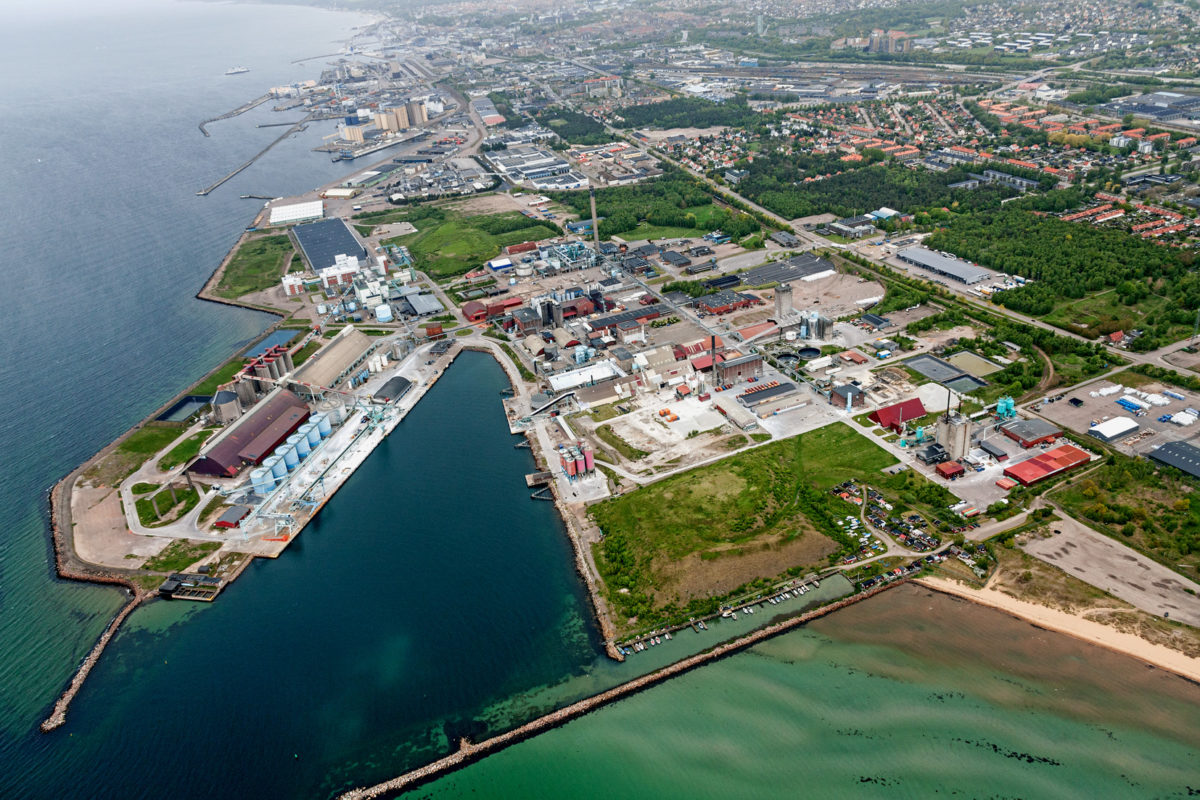Description
Industry Park of Sweden (IPOS) is an industrial park owned and operated by Kemira in Helsingborg, Sweden. The business idea of IPOS is industrial symbiosis. In other words, by innovative resource co-operations create added value to reduce costs and environmental impact. Today, IPOS is a fully developed site for industrial symbiosis and park hosts approx. 20 companies within chemical- and food industry, logistics and service. All companies within the park collaborate around energy, material, utilities, logistics, infrastructure and services. An important part of the industrial symbiosis is sharing of recovered energy from Kemira’s processes.
Besides energy, our collaboration around material flows is just as extensive, as the product or by-product from one plant becomes the raw material of another. Besides from saving costs and emissions from transportation, our material collaboration also increases resource efficiency and reduces waste streams and the consumption of virgin materials.
By our large scale industrial symbiosis system, we share fixed costs for infrastructure and central production plants, reducing costs for all involved companies. This set-up also reduces environmental impact, as large-scale central utility production plants are far more energy efficient than several decentralised smaller production plants.
Added value
- 600 GWh of energy is recovered every year to replace the consumption of primary fuels not only for Kemira but also for the companies within IPOS and Helsingborg City.
- Recovered energy from Kemira is the base load of the district heating network in Helsingborg, accounting for a third of the total yearly heat demand. By using Kemira-heat, the city of Helsingborg has in total saved 1.6 million tons of CO2 (source: Master Thesis by Linköping University 2014).
- As our recovered energy is produced by exothermal reactions and by heat recovery from product flows, it is climate neutral and does not produce any CO2 emissions. If the corresponding volume of energy were to be produced by for example natural gas, yearly emissions would be 120,000 tons CO2/year.
- Our energy-efficient central compressor plant replaced 30 decentralized smaller compressor units in 2010 and thereby saved 2.4 GWh of electricity per year.
Challenges
Main challenges:
- In an industrial symbiosis, there is always a risk of sub-optimisation if the involved parties do not take a holistic view to the benefits and development of the industry park.
- Too stringent rules on cross-border transfers of waste under the EU Regulation on shipments of waste (1013/2006) can create an obstacle. When industrial by-products are categorised as waste or hazardous waste under the EU Regulation, Kemira believes that the same level of environmental protection could be obtained by means of a single EU registration with the countries of departure or arrival, which could then be accessed by any authority via a central database.
- Regarding end-of-waste criteria, an internal market approach is missing to stop uncertainties or differences between Member States with product classification (waste or byproduct). This would enable a well-functioning internal market for secondary raw materials, giving increased attention to the future use, rather than the source, of the materials.
